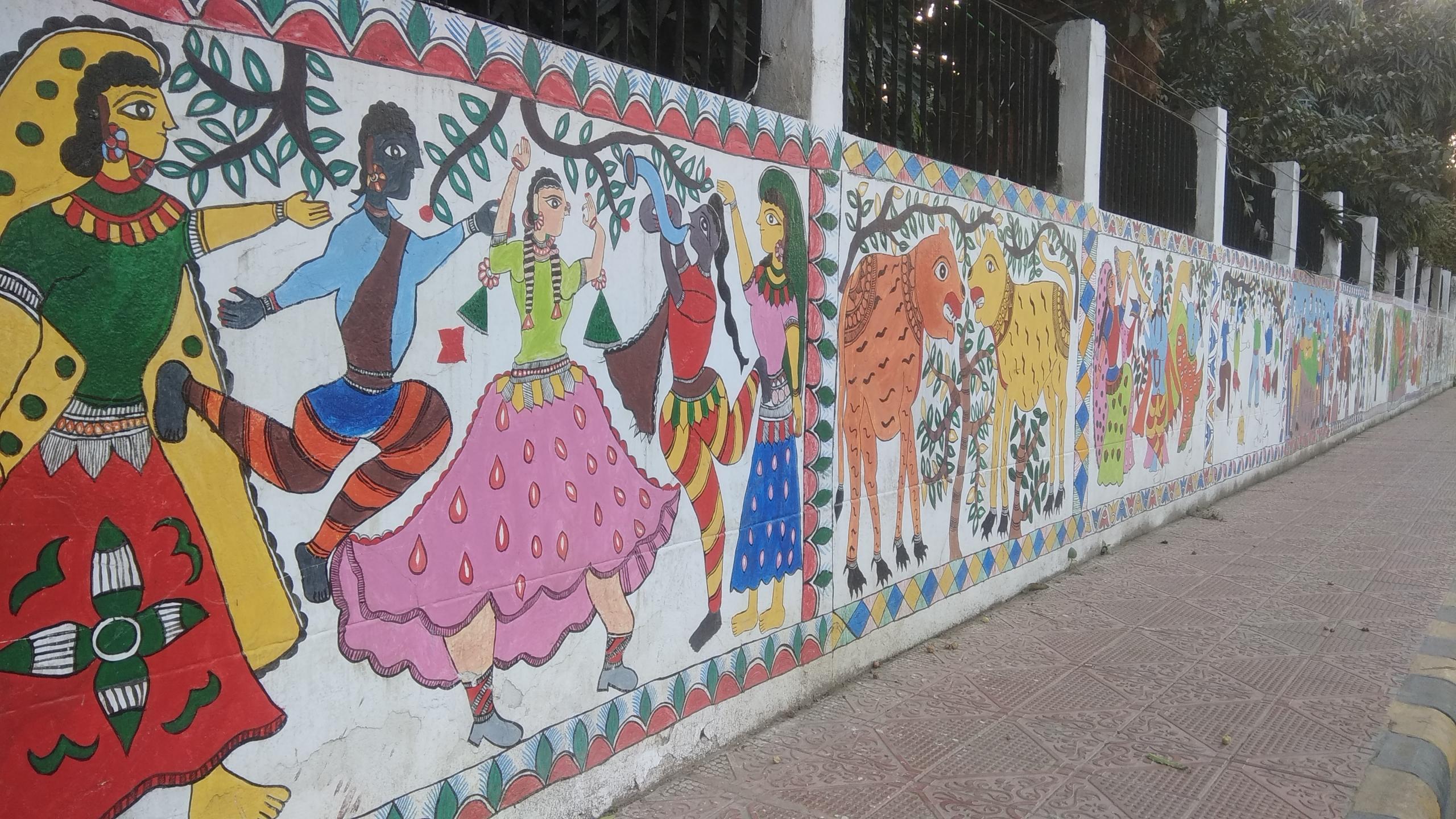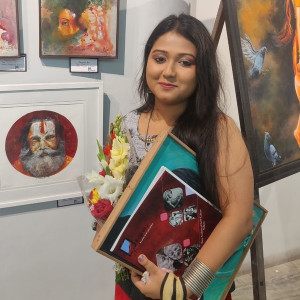Human thought can be expressed through painting. When Homo sapiens painted on mud surfaces using twigs, fingers, or bone points that could not endure the effects of time, art first appeared in the Indian context. The earliest known instances, discovered in Mesolithic caves, changed as a result of people's ongoing presence in these areas. Thus began the Indian tradition of wall painting, of which Madhubani is a well-known figure.
The ancient city of Mithila, where Sita, the daughter of King Janak, was born, is thought to be the birthplace of Madhubani art. The king reportedly commissioned the Mithila paintings to honor his daughter's marriage to Lord Rama of Ayodhya. It was acknowledged as art belonging to the pure castes, or kulin art. Madhubani still thrives as a domestic art form, mostly as societal norms and practices. The painters have started painting on canvases, paper, and other items instead of being confined to walls due to the increased demand for this art style.
E. Moser Schmitt's books, images, and instructional videos provide us with a first-hand understanding of subjects, methods, and social contexts. In terms of philosophy, Madhubani painting is a living tradition founded on dualisms, in which opposites – such as day and night, the sun and the moon, etc. – are inherent in dualisms. They symbolize a complete universe that is teeming with life, including the sun, moon, plants, and animals. In addition, symbols from Islamic Sufism, traditional Hinduism, Buddhism, and tantra are included.

The Story of Madhubani Art Painting
The Madhubani painting tradition originated in the Mithila region, specifically in the villages of Jitwarpur and Ranti, which are close to the Madhubani city. The word Madhubani means "honey forest" in literal terms. It is unknown where Madhubani paintings originated.
Madhubani art is believed to have originated over 2,500 years ago in the Mithila region of Bihar, India. It has a rich cultural heritage and is characterized by intricate designs and vibrant colors.
But according to legend, King Janak, who ruled the Mithila Kingdom in the eighth or seventh century BCE, ordered these paintings to be created to immortalize the events surrounding his daughter Sita's marriage to Prince Rama (of the Hindu epic Ramayana).
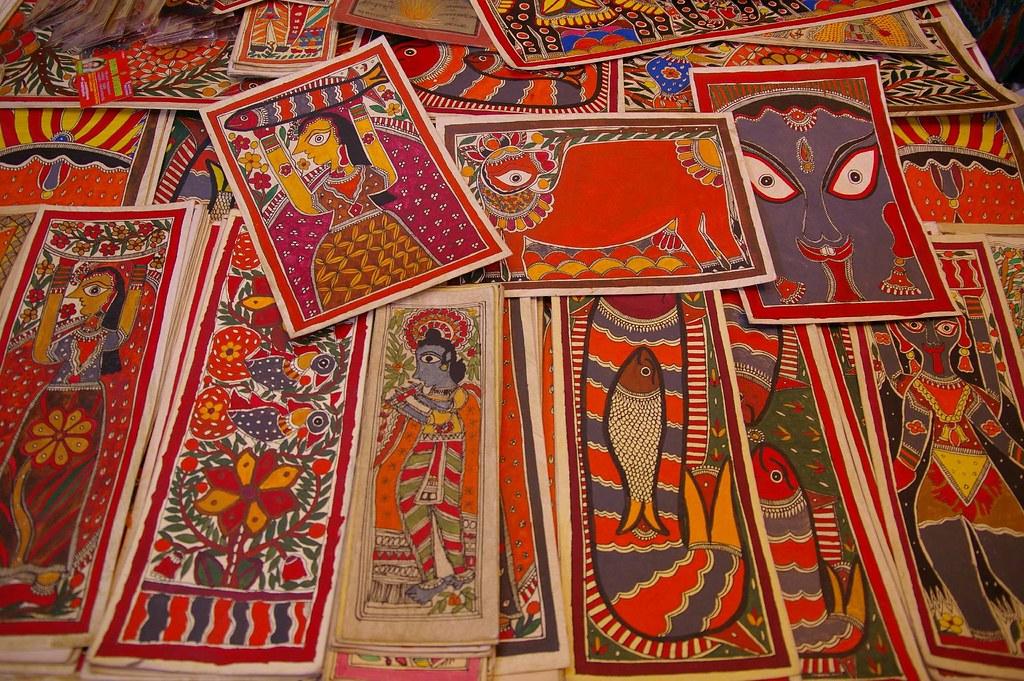
These folk paintings are the sole property of the painters, and mothers have passed down their knowledge to their daughters through the generations. Girls start playing with paint and brushes at a young age. The finishing touch is the décor of the kohbar, the room in the house where the newlyweds would reside following their nuptials. Even though women have historically created the paintings, men are increasingly participating to satisfy consumer demand.
Additionally, the conventional method of creating this work has been altered. Traditionally, the paintings are created by hand on mud or plastered walls, but due to market demand, they are now being printed on paper and clothing.
In the current setting, the Madhubani painting tradition was discovered in 1934 after a significant earthquake struck Bihar by William G. Archer, a British colonial official stationed in the Madhubani district. He discovered these artworks by accident on the inside walls of the homes. Then, he held a collection of Madhubani paintings with wider themes and far higher quality.
Take a deep dive into the living tradition that is Warli art.
Madhubani Painting - Official Recognition
Madhubani painting gained official recognition in 1969 when Sita Devi was honored with the State award by the Government of Bihar.
Mamta Devi from the village of Jitwarpur also received the National Award. Jagdamba Devi from Bhajparaul, Madhubani, was conferred with the Padma Shri in 1975, while Sita Devi from the village of Jitwarpur near Madhubani received the National Award. Jagdamba Devi's foster son, Satya Narayan Lal Karn, and his wife, Moti Karn, are also esteemed Mithila artists, jointly winning the National Award in 2003. Sita Devi was awarded the Padma Shri in 1981 and was further honored with Bihar Ratna in 1984 and Shilp Guru in 2006.
In 1984, Ganga Devi was bestowed with the Padma Shri. Mahasundari Devi received the Padma Shri in 2011.
Additionally, Baua Devi, Yamuna Devi, Shanti Devi, Chano Devi, Bindeshwari Devi, Chandrakala Devi, Shashi Kala Devi, Leela Devi, Godavari Dutta, Asha Jha Tira Devi, and Bharti Dayal were recipients of the National Award.
Shree Chandra Bhushan Lal Das from Rasidpur, Madhubani, received the National Award in 2003, while Ambika Devi from Rasidpur, Madhubani, received it in 2009.
In 2020, Madhubani artist Dulari Devi was honored with the Padma Shri for her contributions to art.
Smt. Manisha Jha from Raghopur Balat, Madhubani, Smt. Asha Jha from Kathalwadi Belabhor, Darbhanga, and Shree Devendra Kumar Jha from Jitwarpur, Madhubani, jointly received the National Award in 2013.

What is the Most Expensive Madhubani Painting Sold?
The Marriage of Draupadi
The costliest Madhubani painting ever sold is "The Marriage of Draupadi" by artist Bharti Dayal. It was sold for ₹5.7 million (approximately $78,000 USD) at an auction in Mumbai, India, in December 2017. This painting depicts a scene from the Hindu epic Mahabharata and is known for its intricate details and vibrant colors, characteristic of Madhubani art.
Madhubani Painting UPSC Notes
Traditionally, natural materials such as flowers (the aparajita flower is used for blue, the bougainvillea flower for pink, the flat bean leaves for green, the turmeric for yellow, and rice powder for white), vegetables, and mineral stones were utilized to extract colors for handmade Madhubani paintings. They used twigs and bamboo sticks to make brushes. But to save themselves the time-consuming work of extraction and painting, artists these days prefer to use readily accessible colors and brushes from the market.
Before painting, the paper was treated with cow dung to preserve the vivid hue of the natural colors. Cow poo, charcoal, and water were combined to sketch the black border. With a bamboo stick, the artist draws the exact black outline that cannot be erased or changed once it has begun. The entire sheet of paper is filled with this black outline. On their canvases, mithila painters never leave any white area. Natural components like fish, birds, flowers, animals, snakes, and the Sun and Moon are used to embellish the entire space. These elements often represent symbolic qualities like love, pleasure, fertility, eternity, well-being, and success.
Colors and Themes
The paintings primarily depict religious themes. All artworks have love and fertility as their key themes. They are prepared in designated areas of the home, such as the prayer room, the ceremonial area, the bridal chamber, the village's major gates to greet guests, etc. The depictions of mythology and environment in drawings vary depending on the style of the particular artist and the locality. Worshiping Hindu deities and stories from their sacred texts—like the stories of Radha and Krishna, Rama, Shiva, Ganesha, Laxmi, Saraswati, the monkey, the sun, the moon, the Tulasi plant, the Deep (a traditional lamp made of soil, a symbol of a happy life), wedding scenes, and other social events—are the most often painted themes and designs.
Distinct Painting Styles of Madhubani Art
Five unique styles can be found in the Mithila paintings, which are separated into two 'gharanas': Ranti Gharana and Jitwarpur Gharana, both situated in Madhubani areas. Among these distinctive Madhubani painting styles are:
Bharni
The Hindi word "bharni" means "to fill." This design style features bright hues like red, yellow, orange, and so on, with bold, dark black lines drawing the design's outlines. Paintings by Bharni frequently include Hindu gods and goddesses.
Religion permeates all types of art in India, including the famous Pattachitra art of Odisha and West Bengal.
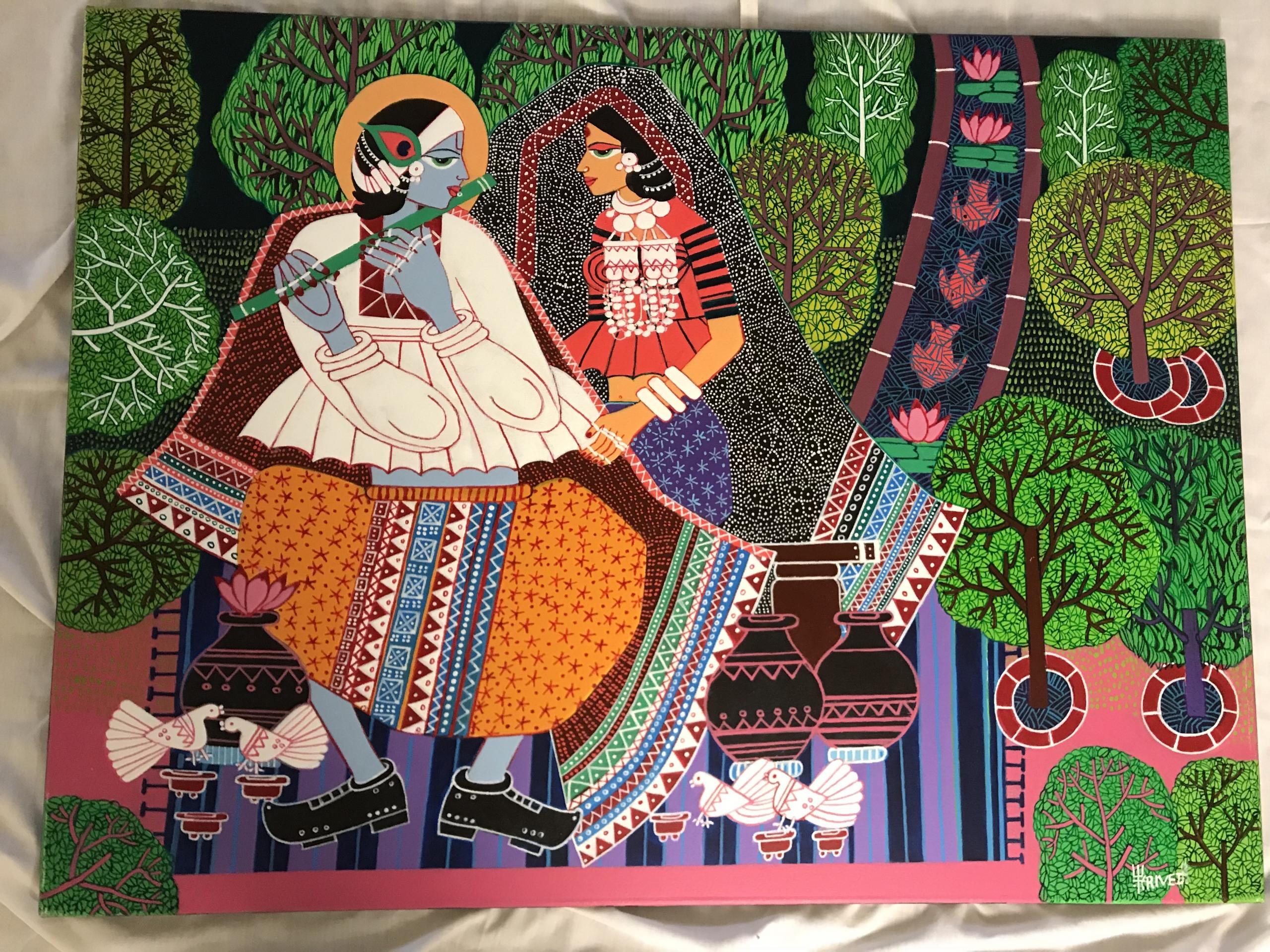
Kachni
The word "Kachni" means "line art." Kachni style is used to make large line paintings. Finely crafted parallel lines or tiny dots abound throughout the designs. The lines' thickness varies according to the design. People are drawn to this painting approach because it uses a limited color palette to highlight the distinctive qualities of natural elements like flora and animals. mostly employing two colors or monochromatic.
Tantrik
Traditional and religious texts are faithfully portrayed in paintings known as Mithila or Madhubani art. Tantra's influence may be seen in most Tantrik artworks' painting techniques. The Hindu population holds strong beliefs in the Hindu mythological characters that are typically shown in these paintings. These paintings are either kept in households in India or are used in prayers and ceremonies during festivals.
Godna
Chanu Devi is credited with discovering the Godna Madhubani artwork. Chanu Devi utilized bamboo and a kajal pen to create the masterpiece. Natural elements seen in this picture include flowers, fauna, and the tree of life. An ancient Indian tattooing technique is called godna painting. Godna art and artists have been greatly impacted by modernization. Ink has shifted from the body to surfaces like paper, canvas, and textiles. Godna painting has become widely popular across the nation thanks in large part to the contributions of female tattoo artists.
Kohbar
Because it refers to a Hindu marriage ceremony, the term "Kobar" is highly prized in Madhubani art. Additional names for Kobar art, which represents power with Lord Shiva's grace, include Yog Yogini, Tantra Raj, and Shiv Shakti. Usually painted on the walls of the bride and groom's home, this picture depicts Hindu wedding customs.
From its western frontiers to its east, India is home to some of the most ancient folk art forms, including the Buddhist Thangka paintings.
Contemporary Madhubani Paintings
When a visiting foreign artist was drawn to the murals in Mithila in 1962, the Madhubani paintings started to become commercially available. For the artist to transport them and display them throughout his nation, he convinced the women artists of the region to paint those same drawings on paper. The idea proved to be very successful, and Madhubani paintings started to become commercially available. Since then, there have been several variations in painting techniques.
Madhubani or Mithila paintings are still highly regarded worldwide as artistic creations. The subjects of Madhubani paintings are typically linked with Hindu deities, fish, birds, animals, natural objects like the sun and moon, and sacred plants like the banyan tree or tulsi, which is revered in Hindu mythology. Madhubani paintings still predominantly feature nature and Hindu mythical figures. In addition to these focal points, several paintings depict scenes from the royal court as well as social gatherings like weddings.
There are two classic styles of Madhubani paintings: Bhittichitra, which are paintings on mud walls, and Aripana, which are paintings on ground soil. Three rooms in particular have mud walls where Bhittichitra is made: the drawing room, the room of the newlywed couple, and the room dedicated to the family god or goddess. These rooms also have paintings on the walls commemorating festivals like Diwali and Dussehra, as well as marriage and Upanayana (holy thread ceremony).
An ancient tribal art form at risk of extinction is the Pithora style of art prevalent in Gujarat.
Madhubani Art: FAQs
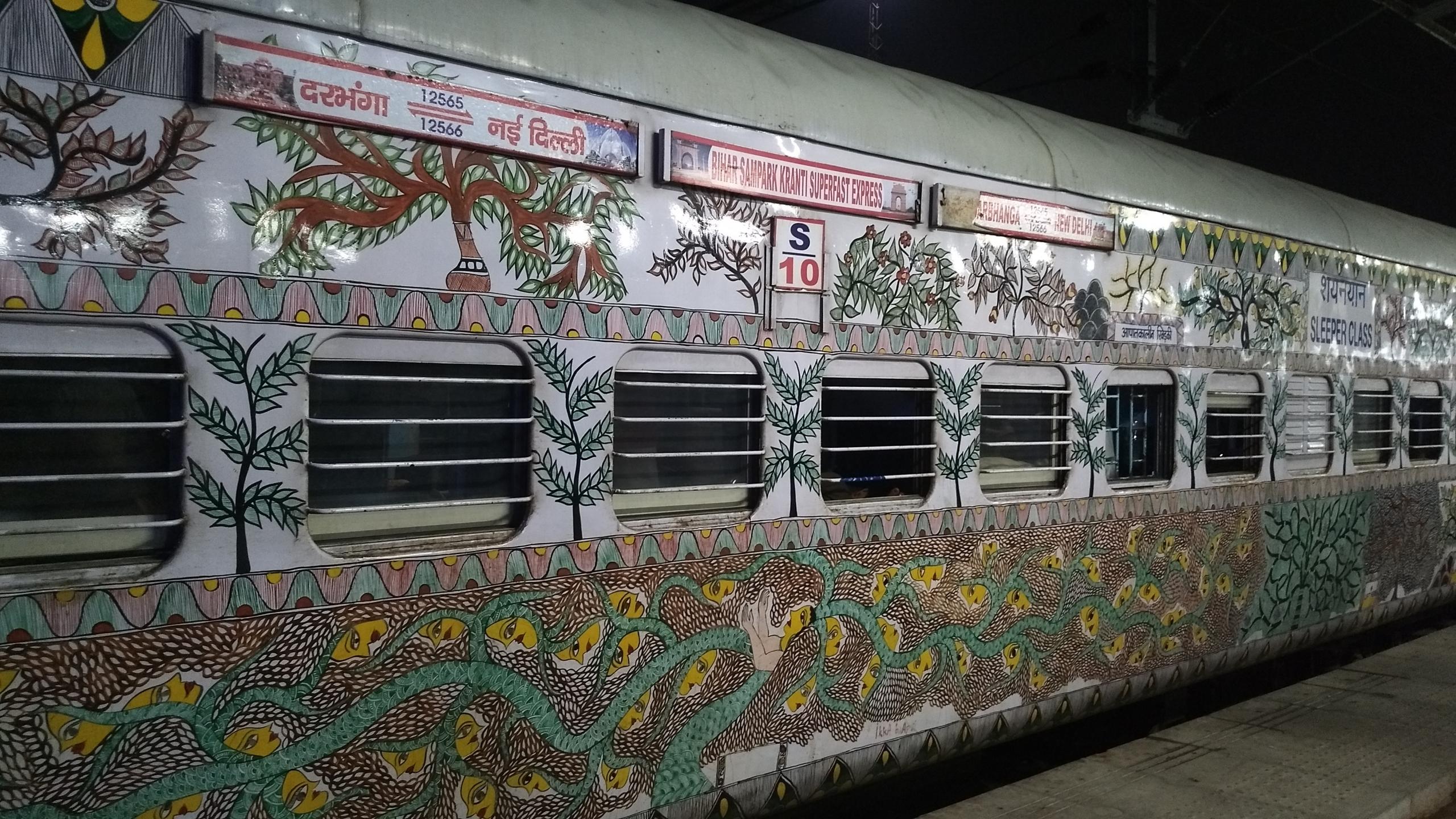
What is Madhubani art?
Madhubani paintings are some of the most well-known in the entire globe. Mithila's popular art reflects the ingenuity and empathy of its inhabitants. Like any folk art, it also reveals the psychology of the culture to which it belongs. This ancient art form is created with natural dyes and paints, matchsticks, brushes, twigs, and fingers. It is distinguished by striking geometric patterns. Since women from the Mithila region produce the majority of these paintings, they have significant meaning in a society where men predominate.
To which state does Madhubani art belong?
Madhubani painting also referred to as Mithila art, flourishes in the Mithila region of Bihar.

